For the month of January 2021, I completed my first ever pantry challenge. What is a pantry challenge? Simply put, it’s when you eat out of your pantry and freezer and limit (or eliminate) your trips to the grocery store.
Everyone can set up their own rules for a pantry challenge, because we are all at different places in life! For instance, I allowed myself to go for milk and some fresh veggies and bananas. I think it would be super-cool to have my own cow, but I’m not there, and I wanted to challenge myself in other areas so I was ok with buying milk and some fresh veggies occasionally.
I have absolutely fallen in love with this challenge! It has helped me to see how much I use and need in a month and proved that we can survive on what we have on hand, if needed.
My favorite part of the challenge has been creating a monthly menu plan and learning how to use sourdough to make all my bread. I’ll explain more about this later, after I give you an idea how to get started on your own pantry challenge.
How To Prepare for Your Pantry Challenge
There are a few things you’ll want to do before starting your pantry challenge. Because I’m a planner, I feel like these are right up my alley! It’s important to look ahead for the entire month (or however long you want to challenge yourself), so get out your pen and paper, a calendar and some quiet space to do some thinking and planning!
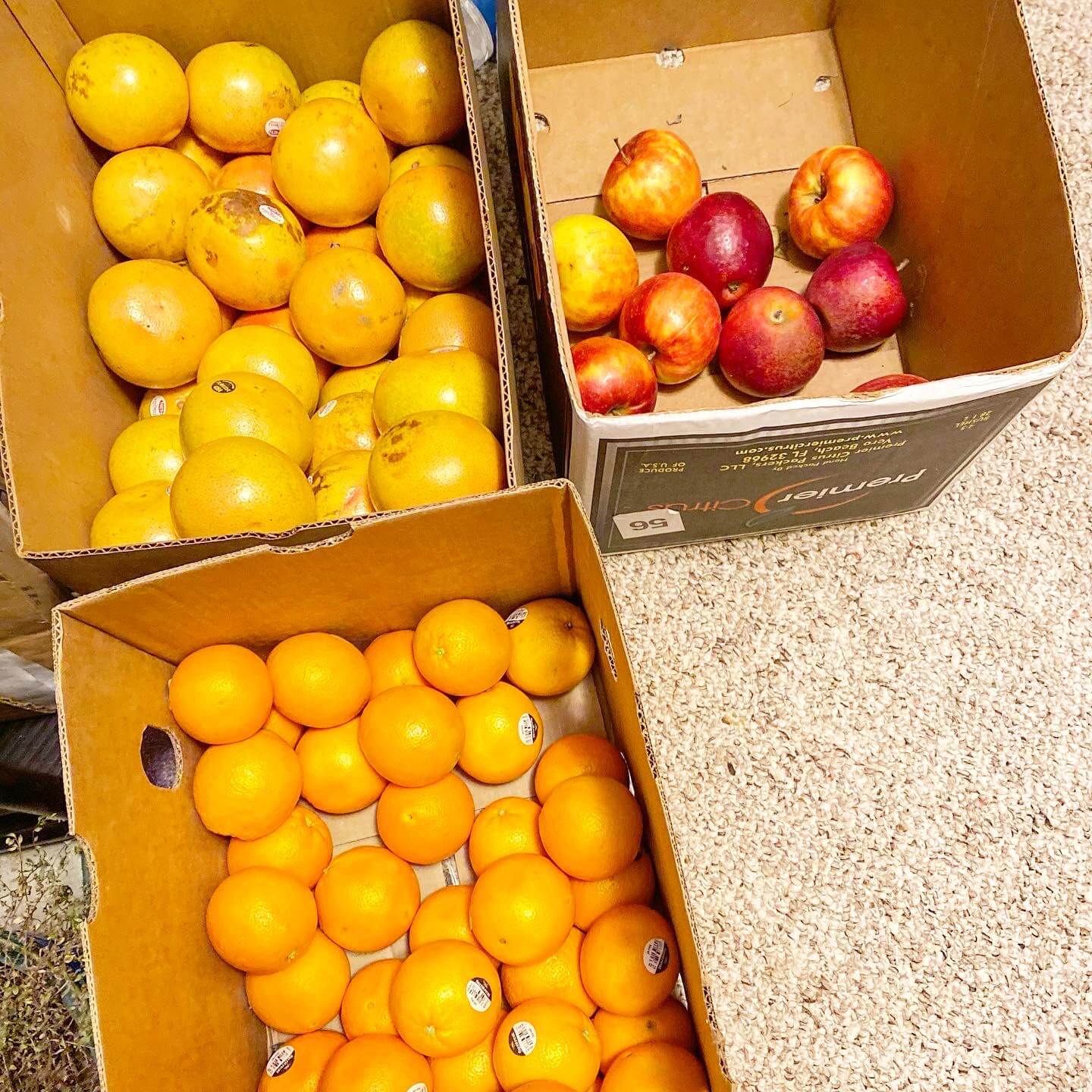
1. Create a stockpile of fruits, veggies and grains.
I started the challenge by stocking up on oranges, grapefruits and apples. I went to a local bulk foods store and bought them by the case or bushel. I spent about $50 to get these items that I knew would keep well in the cold room in my house. (You might use a basement or your garage if you don’t have a cold cellar area.)
In our cold room, I also keep potatoes, onions and butternut squash from our summer garden. You can keep a bag of potatoes or onions in a dark, cold room for much of the winter. If they start to sprout, I just cut them off. I really like keeping sweet potatoes on hand as well, because they make super simple and quick sides to a meal, like meatloaf.
I bought rolled oats, sugar and flour in bulk. Well, some of it wasn’t really bulk, I just tried to guess how much I thought I would need for a month. We like to make our own granola and baked oatmeal for breakfast, so I grabbed a few bags of those from discount and bulk grocery stores in Lancaster County. We don’t go through too much sugar since we often use honey instead, but I did buy 1-2 bags just to have on hand—especially since we often like to bake in the winter months.
I severely underestimated the amount of unbleached all-purpose flour I would need. I had never made all our bread before (I’m talking ALL the bread—loaves, biscuits, hot dog buns, cinnamon rolls, and everything!) So I had no idea how fast I would go through it. About the second week of January, I did go buy enough to fill an entire 5 gallon bucket, and that was a more practical amount. 
Finally, I purchased different kinds of rice, dry beans and some canned beans. We like to have brown rice, white rice and jasmine rice on hand, so I found those in the biggest bags possible. I am going to purchase a bag of arborio rice for February, because I’m hoping to try some risotto recipes with my butternut squash I saved from last summer.
You may also want to stock up on things like . . .
- applesauce (a great side, or use for baking instead of oil)
- pasta sauce
- barbecue sauce / mustard / ketchup
- canned tomatoes (for chili, soups and stews)
- pickles
- any other basic items you’d use often
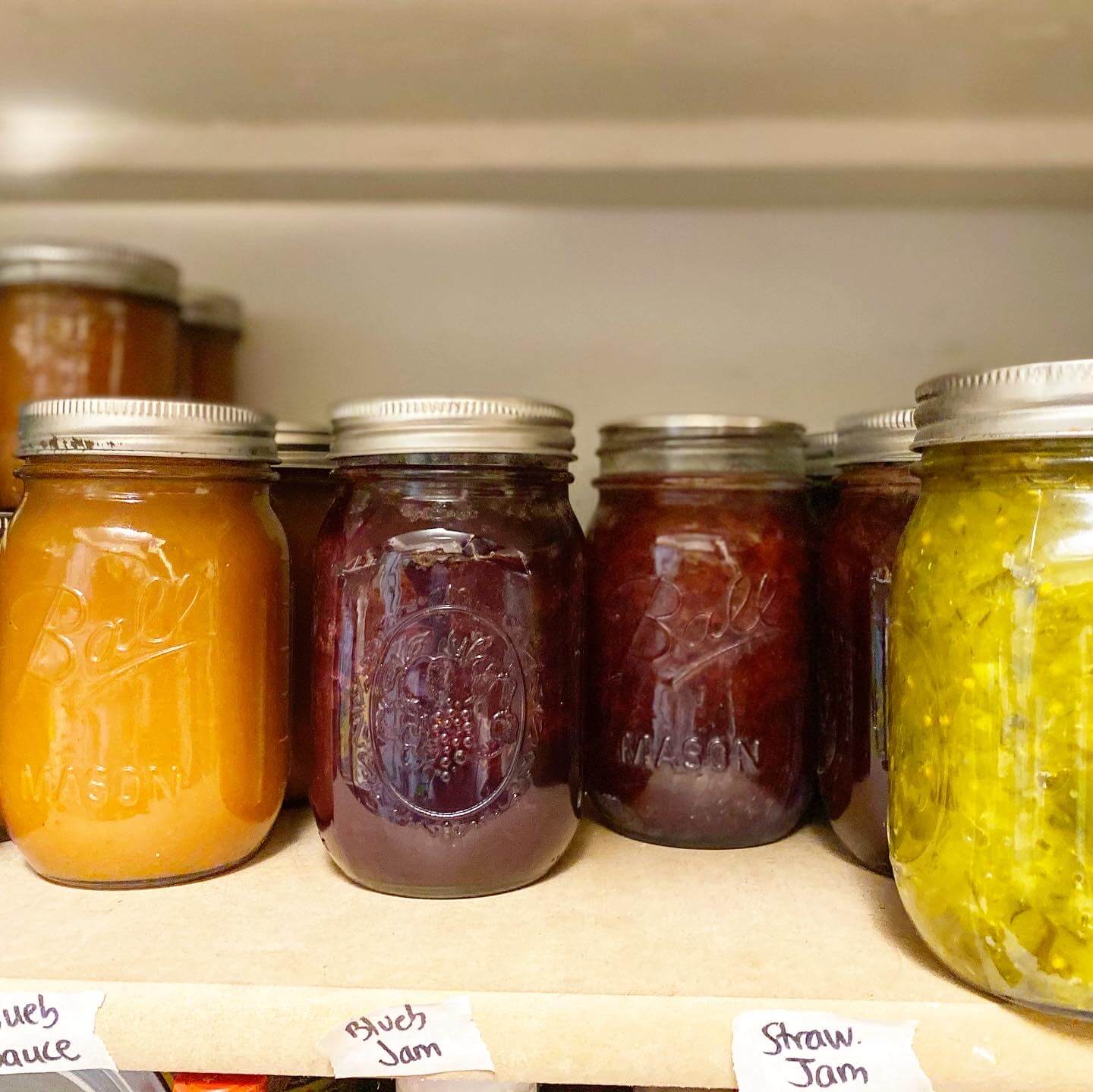
2. Plan on using anything you preserved and froze the past summer.
This past summer, I worked hard to preserve different fruits and vegetables so I’d have them on hand this winter. We made relish, bread & butter pickles, dill pickles, strawberry jam, peach sauce, blueberry jam, and blueberry sauce.
I have been utilizing the fruit spreads and pickles and relish we preserved this summer as well as the potatoes, onions and butternut squash we saved from our garden. Plus we are blessed to have six chickens that lay eggs throughout the winter and keep us pretty stocked.
I also froze applesauce (we love to serve this as a healthy side to our meals whenever we can), sliced peaches and a case of blueberries, as well as a few strawberries.
I took everything we preserved into consideration when I set up my monthly menu plan, that I will talk about in my next tip. Often times, I will preserve things and then think they are too pretty to actually use, ha! So I wanted to make sure that I put specific times on the menu plan where I would use them—one of the reasons we started having hot dogs with relish and sauerkraut and homemade buns every Friday!
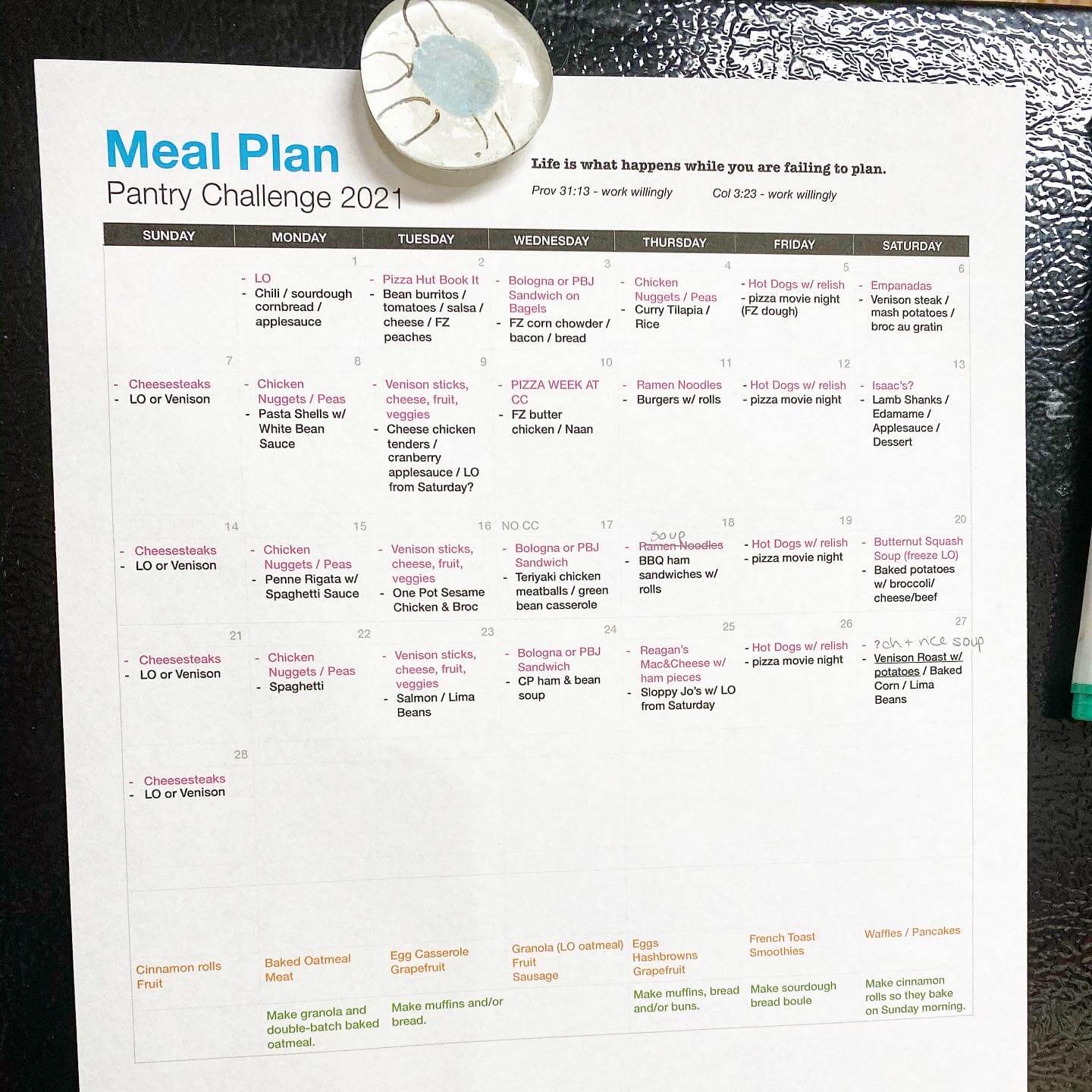
3. Make a monthly menu plan.
To make my monthly menu plan, I first looked at any pre-made dinners I already had in my freezer from the previous month (or two, if I’m honest). I wanted to use those first so I would have more space for anymore double-batches I would make in the month ahead. I added those meals, mostly soups, stews and chili, to the first week of my menu plan.
Sometimes I keep ready to cook CP meals in ziploc bags or even extra casseroles, but I didn’t have any of those this time around.
Then I looked in my freezer to see what meats I had. I made a list and found recipes that I wanted to use them for, spacing them out through the remaining weeks—so we had variety and didn’t have chicken three days in a row.
Next, I looked at the vegetables in my freezer and pantry and added sides to all my meals. I found some new recipes to try for some of these but also used tried and true recipes. I don’t spend a lot of time on dinner prep usually, so some quick baked potatoes, mashed potatoes or roasted veggies is my usual plan.
Finally, for any meals I had remaining blank on the calendar, I added recipes I have been wanting to try and made a list of what food I would need to order for those. I added them to my grocery pickup to get my pantry challenge started, which leads me to my next tip . . .
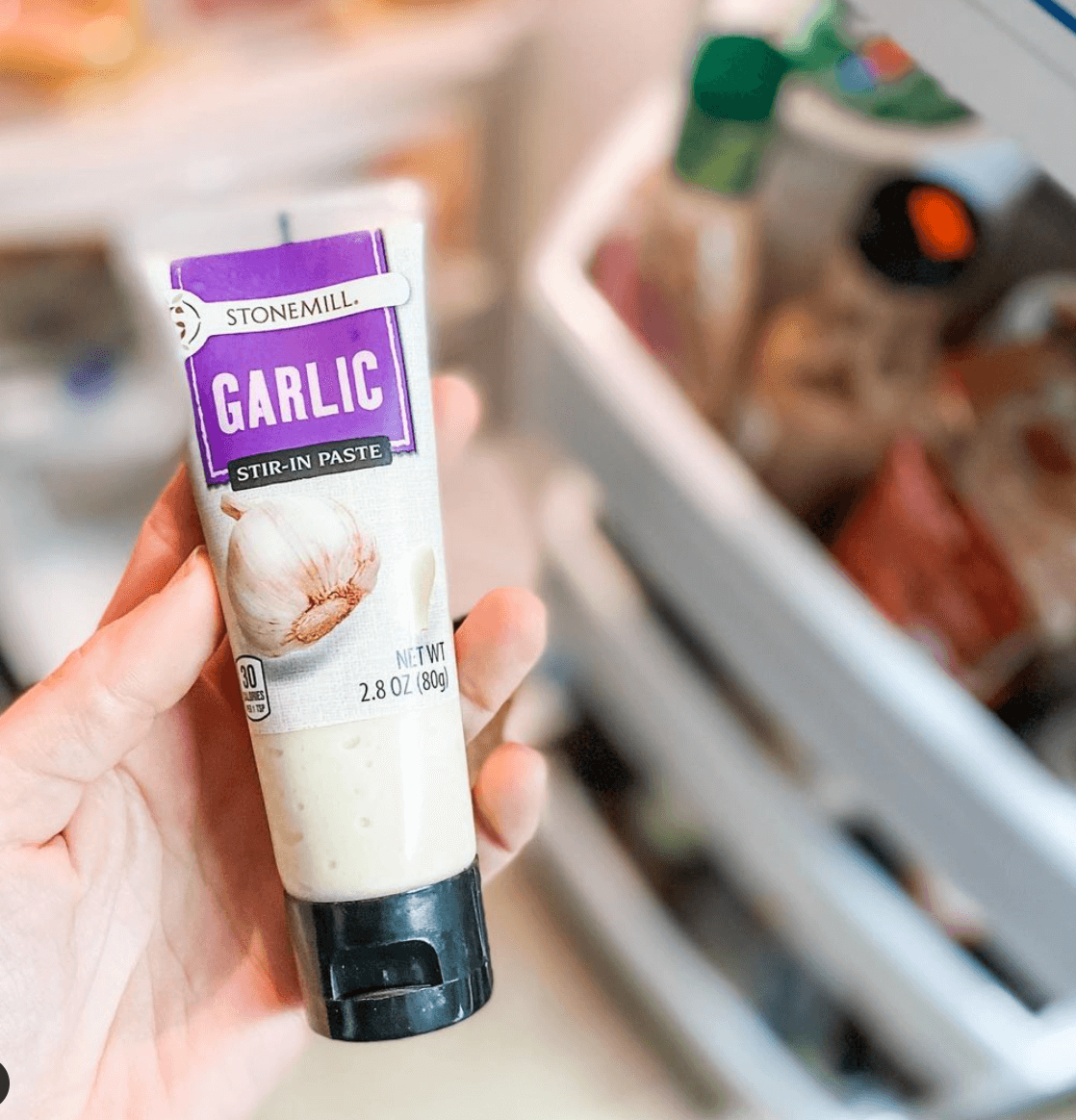
4. Schedule a grocery pickup for consumables.
At the beginning of January when I began the pantry challenge, I did one grocery pickup from Aldi. I used this Aldi order to purchase some basic items and ingredients I would need for the recipes I chose for the month.
By the way, have you tried using InstaCart to order from Aldi? It was so simple and quick—much better than I anticipated. I might just do this all the time from now on so I’m not tempted on impulse buys in that one aisle—you know which one I’m talking about. 
For that Aldi pickup order, I purchased some meats I would need and didn’t have on hand (like chicken breasts and chicken drumsticks). I also stocked up on cheeses and sour cream (which keeps awhile and can even be frozen!). Butter was also in my order, and some herb squeeze tubes because I find them so convenient! My total was about $60—which I thought was pretty good to last me the entire month!
You could also choose to visit a discount grocery store to purchase any consumables you need. Here’s a list of 12+ Discount Grocery Stores in Lancaster County Area.
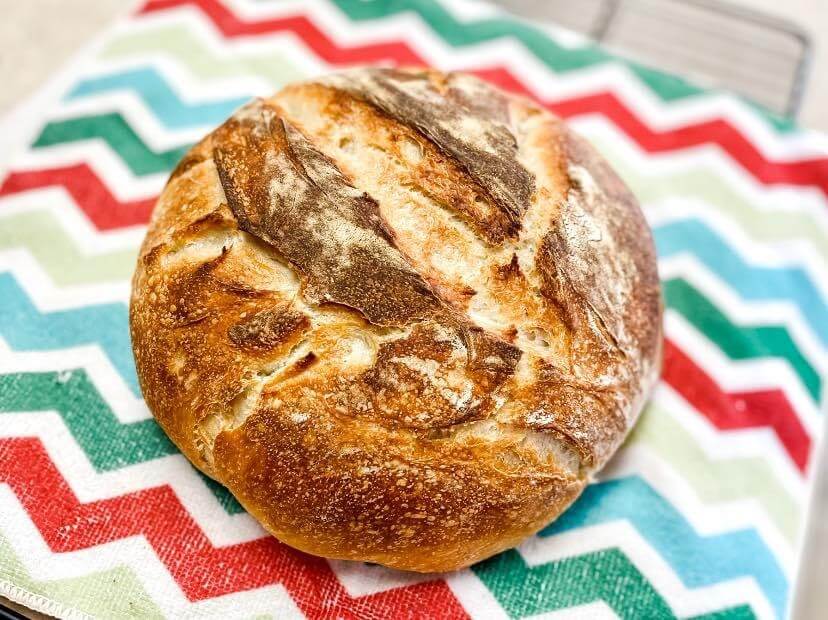
5. Learn how to make your own bread.
This might sound scary, but making my own breads has probably been what has saved me from being able to hold out on going to the grocery store the most. And it hasn’t been as difficult as you might think it would be. I even tried bagels last week—I am just having so much fun with it!
I would say it took me about a month to get really confident using my sourdough starter, but really only a week til I was able to make loaves consistently for my family. A huge savings for us!!!
Here are a few of my favorite sourdough recipes. I recommend starting with a sourdough boule, because it makes a beautiful loaf and it gets you bread for your week. Then try the cinnamon rolls, because they are amazing and so much more filling than anything you’d buy at the store. Use the dinner rolls recipes to make rolls and buns—just shape them differently for hot dog buns.
If you don’t like the thought of trying sourdough, there are some really simple recipes that use yeast packets—for bread, rolls, pizza crust, or whatever else you use on a regular basis. These are nice because they don’t take as much time to rise, nor as much planning ahead (although I’m more surprised everyday with how simple sourdough can be once you get used to it).
Have you ever done a pantry challenge? I would love for you to join in and see if you end up loving it too!






